by Jonas E. Alexis
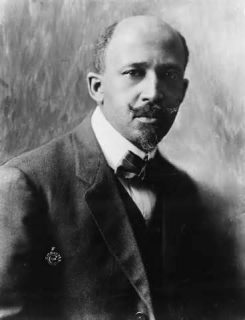
William Edward Burghardt Du Bois (1868-1963), at the beginning of his career, criticized the Jews, but such sentiments came to an abrupt end when Du Bois “became the editor of [the NAACP journal] The Crisis.”[1]
The Jews knew that Du Bois was a closet Marxist—though he “waited until he was in his nineties to join the Communist Party”[2]—and played on those sympathies to entice him into joining their cause.
In 1903, Du Bois wrote unflattering assertions about the Jews in The Souls of Black Folk, and Jewish supporters such as Jacob Schiff and Rabbi Stephen Wise protested.
“But Du Bois let the comments stand until he revised the book in 1953, when he was eighty-five years old. He then deleted the references and apologized for his own insensitivity.”[3]
E. B. Du Bois had many Jewish associates, including the father of Bettina Aptheker, a Marxist historian, activist and author who joined the Communist Party in 1939.
In March 1953, Du Bois wrote an essay entitled “On Stalin” in which he extolled the Communist dictator as
“a great man; few other men of the 20th century approach his stature. He was simple, calm and courageous…Stalin was not a man of conventional learning; he was much more than that: he was a man who thought deeply, read understandingly and listened to wisdom, no matter whence it came.
“He was attacked and slandered as few men of power have been; yet he seldom lost his courtesy and balance; nor did he let attack drive him from his convictions nor induce him to surrender positions which he knew were correct.”[4]
In 1931, Du Bois wrote Albert Einstein a letter in which he asked him to write “a word about the evil of race prejudice in the world. A short statement from you of 500 to 1,000 words on this subject would help us greatly in our continuing fight for freedom.”[5]
Einstein, who was living in Germany at the time, probably didn’t have a clue who Du Bois was, but Du Bois continued, “With regard to myself, you will find something about me in ‘Who’s Who in America.’ I was formerly a student of Wagner and Schmoller in the University of Berlin.”[6]
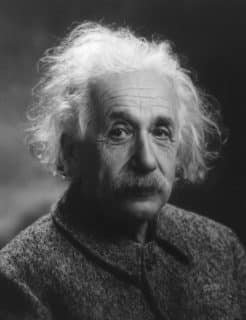
Einstein could not send Du Bois a long letter because of “excessive workload,” but he did send a short letter that led Du Bois to praise Einstein in The Crisis. Soon after, the New York Times published an article with the headline “Einstein Hails Negro Race.”[7]
Later, when Einstein moved to the United States, he was a strong supporter of Du Bois and Paul Robeson; after that, it was only a matter of time until Einstein joined their movement. In an article entitled “The Negro Question,” Einstein declared,
“[The American’s] sense of equality and human dignity is mainly limited to men of white skins. Even among these there are prejudices, of which I as a Jew am clearly conscious; but they are not important in comparison with the attitude of the ‘Whites’ toward their fellow-citizens of darker complexion, particularly toward Negroes. The more I feel an American, the more this situation pains me.”[8]
Einstein castigated Europeans, saying,
“Your ancestors dragged these black people from their homes by force; and in the white man’s quest for wealth and an easy life they have been ruthlessly suppressed and exploited, denigrated into slavery.”[9]
I have already addressed the issue of slavery; this kind of attitude is historically inconsistent, especially when you take into account the number of Jews in the slave trade. To make matters worse, Talmudic Judaism has some utterly disgusting views about blacks.
For example, Rabbi Hiyya declared in the Talmud,
“Ham and the dog copulated on the Ark, therefore Ham came forth dark-skinned.”[10]
The fact that Einstein did not even mention these issues shows that Einstein was either ignorant of it or had fallen victim to double standards.
Other intellectuals, like Richard Wright, follow in Du Bois’s Communist footsteps. This would include civil rights activist Julius Lester.[11]
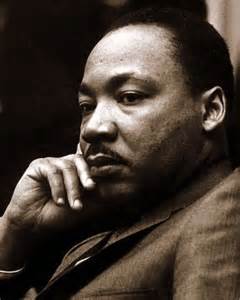
While almost everyone involved in the civil rights movement of the 1960s was determined to eradicate racism by any means, no one stopped to notice the sexual mores that lurked beneath the movement itself.
Martin Luther King, Jr., despite his admirable concept that “a man should not be judged by the color of his skin but by the content of his character,” was personally immersed in sexual debauchery, something nearly all his associates knew.
David Garrow, author of one the most thorough biographies of Martin Luther King, Jr., declared that King had a “compulsive sexual athleticism.”[12]
Many black ministers could not take King’s religious messages seriously precisely because King’s personal life contradicted his public appearances. Garrow writes, “King’s sexual behavior stood at a great distance from his professed beliefs about sexuality, and the contradictions created painful and at times overwhelming guilt.”[13]
Some have suggested that had King not been assassinated, his marriage would have ended in divorce over his infidelity.
In fact, many activists saw the Southern Christian Leadership Conference (SCLC) as a hotbed for “getting laid.”[14] One staffer declared,
“I watched women making passes at Martin Luther King. I could not believe what I was seeing in white Westchester women…They would walk up to him and they would sort of lick their lips and hint, and [hand him] notes.”[15]
Ralph David Abernathy, a protégé of King’s, writes in his autobiography that King was involved in extra-marital affairs, even giving examples of women coming and going from a hotel where King and Abernathy were staying.[16] But Abernathy writes page after page defending King’s behavior.[17]
Taylor Branch, another historian of the civil rights movement, agrees that King was guilty of such charges.[18]
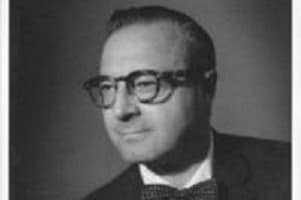
Although Friedman says Martin Luther King, Jr., was under FBI surveillance because of his extramarital affairs,[19] King was actually a person of interest because of his strong ties to Stanley Levison, a Jewish Communist and attorney, who was one of King’s closest advisors and even made arrangements for one of King’s autobiographical accounts to be published by Harper & Brothers.[20]
Levison did more than just coach King: he prepared King’s “tax returns,” wrote “articles and speeches,” and kept “an eye on Harper’s promotion of [King’s book] Stride Toward Freedom”[21]
Levison even told King to avoid saying a few things in the book because some of them “could create unnecessary charges of an egocentric presentation of the situation and is important to avoid even if it were the fact.”[22]
Levison ended up writing the final chapter of Stride Toward Freedom “and even drafted new passages that were incorporated verbatim into the published text.”[23]
For all of this, Levison asked for no salary. When King wrote Levison a letter asking him to bill him for his laborious work, Levison replied that no salary is needed, adding,
“It is out of the question…The liberation struggle is the most positive and rewarding area of work anyone could experience.”[24]
Garrow wrote, “King accepted Levison’s position, and their relationship grew closer.”[25]
It was communist Bayard Rustin who first introduced Levison to King in 1956.[26] Levison dedicated himself to shaping and refining Martin Luther King Jr., and the SCLC. Levison’s work was not without reward, as later King began to echo Levinson’s Communist sentiments, even making statements suggesting private Communist leanings.
“I am not going to allow anybody to put me in the bind of making me say, every time I said there must be a better distribution of wealth, and maybe America must move toward a democratic socialism, [that] I am saying that we must be Communist or Marxist.”[27]
King also surrounded himself with people such as Harry Wachtel, Jack Greenberg, Rabbi Herschel, and Allard Lowenstein. But the most influential among them was Stanley Levison.[28]
Since King relied on Levison for most of his speeches and published works, Levison laughingly told one of King’s associates that he “considered himself one of the foremost religious writers in America.”
Even after King’s death, his wife Coretta sought help from Levison, who “wrote speeches and articles for her” and armed her for press conferences:
“Levison gave her materials to read beforehand and told her what to expect from her interrogators.”[29]
In general, Levison and other Jews energized the spirit of the SCLC.
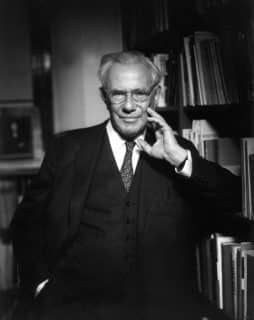
In addition to falling under the spell of Communists like Levinson, Martin Luther King, Jr., was also influenced by Paul Tillich, one of the most liberal theologians of the twentieth century.
King’s Ph.D. dissertation[30] was a comparison between Paul Tillich and liberal American theologian and philosopher Henry Nelson Wieman.
Another way Tillich influenced King was sexually— King’s sexual life paralleled Tillich’s own sexual proclivities. Tillich’s wife, Hannah, recounted in their autobiography that she found whorehouses “a window into hidden truth”!
Shortly after their move from Germany to America, they settled in Harlem, New York, where they found the sexual liberation they were looking for among the blacks. Hannah writes:
“Somebody must have taken us to Small’s Paradise, where one went up a steep staircase, watched by an old pockmarked Negro, whose muddy uniform with gold and braid we feared a little.
“Later we would shake hands with him. Inside the dark, long room, we sat facing clouds that drifted behind an orchestra of Negroes, who played noisily and shrilly. It was as if we had entered a tropical forest with parrots screaming, dark faces peering out of the jungle, falsetto voices, and brilliant colors.
“A Negro danced with me, a Negress with Paul. Once we dared to go to a show in a basement were there were mostly Negroes. In the dancing space at the center of the room occasional performances were given.
“A nude Negress painted gold, having danced with a Negro twice her size, leaned her body against a post and masturbated with violent snakelike movements, while her former partner and another girl unmistakably performed the acts of intimate sex. It did not seem vulgar or fleshy. It was filled with the natural vivacity of these beautiful black people.”[31]
This not a coincidence, for immediately after being dispatched from Germany, Tillich and his wife joined Union Theological Seminary, which was known for its propagation of Wilhelm Reich’s sexual ideologies.
“Reich made contact through Alexander Lowen with the Settlement House connected with the Union Theological Seminary in New York, then home to Paul Tillich…
“Lowen arranged a speaking engagement for Reich to the people of the Union because he felt that Reich ‘could change the world’ by explaining the social implications of the sexual problems of youth.”[32]
As we have seen, the 1960s civil rights movement was subtly influenced by Jewish revolutionary activity, and many impressionable people jumped on the bandwagon without being aware that the bandwagon itself was loaded with moral and political explosives. What are the results? Since the 1960s, the black family has never been the same:
“In 1960, 78 percent of all black families were headed by married couples; today that figure is less than 40 percent. Similarly in the 1950s, black crime rates were higher than those of whites, but they were vastly lower than they are today. During that period…racism was far worse, especially in its ability to deny blacks access to basic rights and opportunities.”[33]
The modern breakdown of the family—based on a weakening of the values that defined family and community—is just that: a modern development.
This is the case even when taking into account the uncertain family life of black slaves. Historian Brenda E. Stevenson, in her conclusion to Life in Black and White: Family and Community in the Slave South, stresses the universal bonds that brought families of all races together.
“Community values and directives defined southern life in ways that would be difficult for contemporary readers to reconcile given the lack of importance many ascribe to ‘a’ or ‘any’ community today. ‘Community,’ its collective will and value system, however, was the linchpin of southern morality and the southerner’s socio-cultural ideology. It had tremendous worth and a defining presence for everyone, whether free or slave, man or woman, planter or pauper.…
“Free blacks and slaves also were determined to maintain the integrity of their families and communities despite often overwhelming pressures to the otherwise.”[34]
Even in the 1940s and 50s, black crimes were quite low, but when the number of black marriages began to decline during the 1960s,[35] things were never the same. After the civil rights era, the moral pendulum for many black families seems to have swung in the opposite direction. The number of children born out of wedlock rose dramatically, as did crime rates among black families.
Most modern intellectuals lay the blame for this moral breakdown directly at the feet of slavery. However, this widely held notion is false, historically and logically. Thomas Sowell himself wrote,
“[T]he fact is that in the late nineteenth century, when blacks were just one generation out of slavery, there was nothing like today’s levels of unwed births or failure to participate in the labor force. It has been from the 1960s onward that these social pathologies have escalated. Whatever the cause, it has arisen long after slavery had ended.”[36]
He continued,
“Over the entire 85-year history of academic success in [Dunbar High School], from 1870 to 1955, most of its graduates went on to higher education.
This was very unusual for either black or white high-school graduates during that era. Because these were usually low-income students, most went to a local free teachers’ college or to relatively inexpensive Howard University, but significant numbers won scholarships to leading colleges and universities elsewhere…
“At one time, the reputation of Dunbar graduates was such that they did not have to take [an] entrance examination to be admitted to Dartmouth, Harvard, and some other selective colleges. When Robert N. Mattingly graduated from the M Street School in 1902, he entered Amherst College, receiving credit for freshman mathematics and first-year college physics—and he graduated in three years, Phi Beta Kappa. Yet, far from being one of the elite, Mattingly was, in his own words, “At Amherst on a shoestring.”[37]
This is just the beginning:
“As early as 1899, Dunbar scored higher in city-wide tests than any of the white high schools in the District of Columbia. Down through the years its attendance records were generally better than those of the white high schools, and its rate of tardiness was lower. Dunbar meant business.”
During these flourishing years,
“Latin was taught throughout the period from 1870-1955, and in the early decades, Greek was taught as well. In the 1940s, Dunbar fought a losing battle with the superintendent of schools to have calculus added.”[38]
Yet as the years went by, Dunbar’s excellent performance crumbled:
“Now, as inadequately educated, inadequately motivated, and disruptive students flooded into the school, teachers began retiring, some as early as 55 years of age.
“Dunbar quickly became just another failing ghetto school, with all the problems that such schools have, all across the country. Eighty-five years of achievement simply vanished into thin air…During the years of Dunbar’s success, it was starved for funds and some of its classes had more than 40 students.
“As a failing ghetto school today, Dunbar has a finer physical plant than it ever had when it was an academic success.[39]
“The school was in operation more than 40 years before it had a lunchroom, which then was so small that many children had to eat lunch out on the street. Blackboards were ‘cracked with confusing lines resembling a map.’ It was 1950 before the school had a public address system.”[40]
As we have argued in the past, Sowell does not lack the academic sophistication to find out the real cause. In fact, he seems to imply that the civil rights movement was largely a failure.[41] But who was really behind it? Well, Sowell does not tell us.
But we all know that ideological movements cannot stand on their own. They all have their intellectual pinheads and mush-heads. To be more precise, you cannot have a serious ideological movement without the presence of the Dreadful Few. Take it from Benjamin Disraeli:
“You never observe a great intellectual movement in Europe in which the Jews do not greatly participate.”
The Civil Rights Movement was no exception, and ever since that era, America has never been the same. Crime rates skyrocketed and the Dreadful Few in particular began to use “race” to destroy American families, neighborhoods, and communities. Louis Wirth did exactly that in the twentieth century. As we have seen in the previous article, George Soros is following the same pattern in Ferguson.
[1] Jones, Jewish Revolutionary Spirit, 701.
[2] Ibid.
[3] Friedman, What Went Wrong, 47.
[4] W. E. B. Du Bois, “On Stalin,” National Guardian, March 16, 1953.
[5] Friedman, What Went Wrong?, 306.
[6] Fred Jerome and Robert Taylor, Einstein on Race and Racism (New Brunswick: Rutgers University Press, 2006), 8.
[7] Ibid., 9.
[8] Ibid., 86.
[9] Ibid.
[10] This version of the Talmud [Midrash Rabbah, vol. 1 (Soncino, 1983), 293] is quoted in Hoffman, Judaism Discovered, 513
[11] A black boy, Lester discovered at the age of nine that his maternal great-grandmother was a German Jew. Later, Lester converted to Judaism and eventually taught at the University of Massachusetts for thirty-two years.
[12] David Garrow, Bearing the Cross, 375.
[13] Ibid., 376.
[14] Ibid., 375.
[15] Ibid.
[16] Ralph David Abernathy, And the Walls Came Tumbling Down (Chicago: Lawrence Hill, 2010), 470-475.
[17] Ibid., 434-436.
[18] Taylor Branch, Pillar of Fire: America in the King Years, 1963-1965 (New York: Simon & Schuster, 1998), 207.
[19] Friedman, What Went Wrong?, 165.
[20] Garrow, Bearing the Cross: Martin Luther King, Jr., and the Southern Christian Leadership Conference (New York: HarperCollins, 1986), 102, 108.
[21] Ibid., 116.
[22] David J. Garrow, The FBI and Martin Luther King, Jr.: From “Solo” to Memphis (New York: W. W. Norton, 1981), 27.
[23] Ibid.
[24] Garrow, Bearing the Cross, 117.
[25] Ibid.
[26] Garrow, The FBI and Martin Luther King, Jr., 26.
[27] Garrow, Bearing the Cross, 537.
[28] Friedman, What Went Wrong?, 235.
[29] Ibid., 299, 300.
[30] Some have argued that it suffered from plagiarism. See David J. Garrow, “King’s Plagiarism: Imitation, Insecurity, and Transformation,” Journal of American History, Vol. 78, No. 1. (June 1991): 86-92.
[31] Quoted in E. Michael Jones, Libido Dominandi, 431.
[32] Ibid., 268.
[33] D’Souza, The End of Racism, 478; see also Sowell, Black Rednecks and White Liberals.
[34] Brenda E. Stevenson, Life in Black and White (New York: Oxford University Press, 1996), 322-325.
[35] Sowell, Black Rednecks and White Liberals, 161.
[36] Ibid., 160-161.
[37] Thomas Sowell, Black Rednecks, 207-208.
[38] Thomas Sowell, Education: Assumptions Versus History (San Francisco: Hoover Institution Press, 1986), 30.
[39] Ibid., 31.
[40] Sowell, Education, 31.
[41] Thomas Sowell, Civil Rights: Rhetoric or Reality? (New York: William Morrow and Company, 1984).
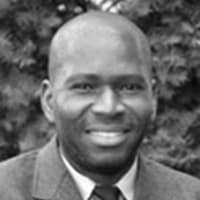
Jonas E. Alexis has degrees in mathematics and philosophy. He studied education at the graduate level. His main interests include U.S. foreign policy, the history of the Israel/Palestine conflict, and the history of ideas. He is the author of the new book Zionism vs. the West: How Talmudic Ideology is Undermining Western Culture. He teaches mathematics in South Korea.
ATTENTION READERS
We See The World From All Sides and Want YOU To Be Fully InformedIn fact, intentional disinformation is a disgraceful scourge in media today. So to assuage any possible errant incorrect information posted herein, we strongly encourage you to seek corroboration from other non-VT sources before forming an educated opinion.
About VT - Policies & Disclosures - Comment Policy



